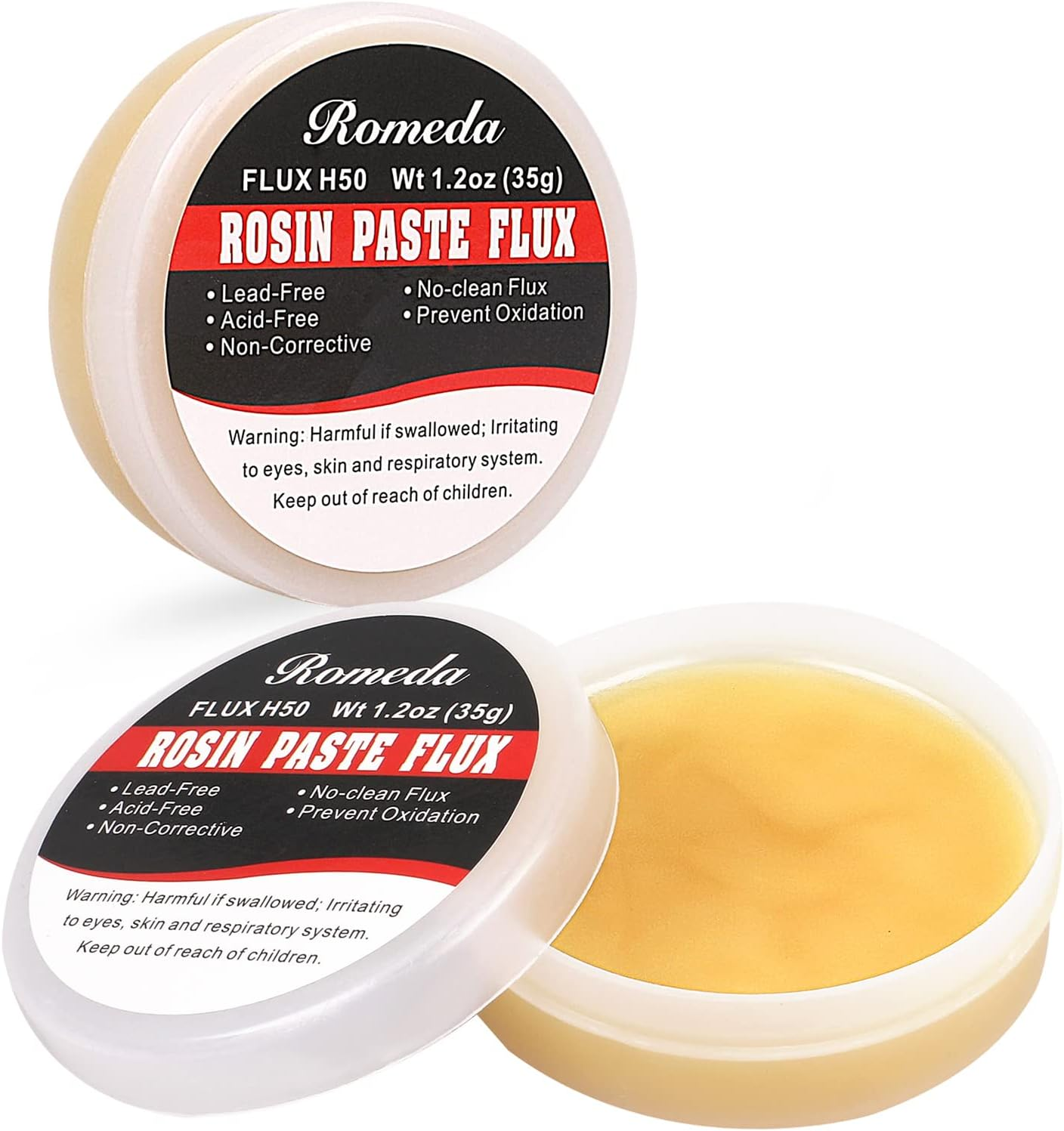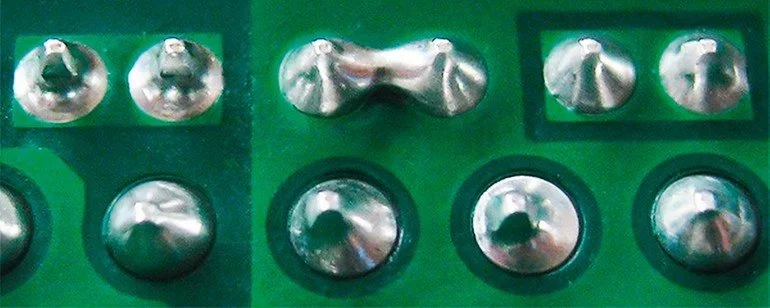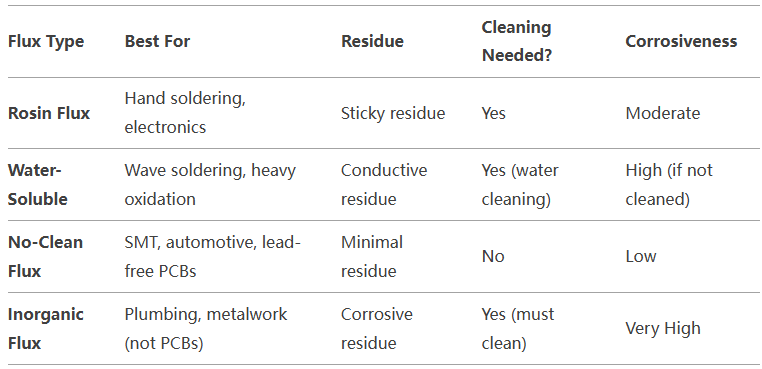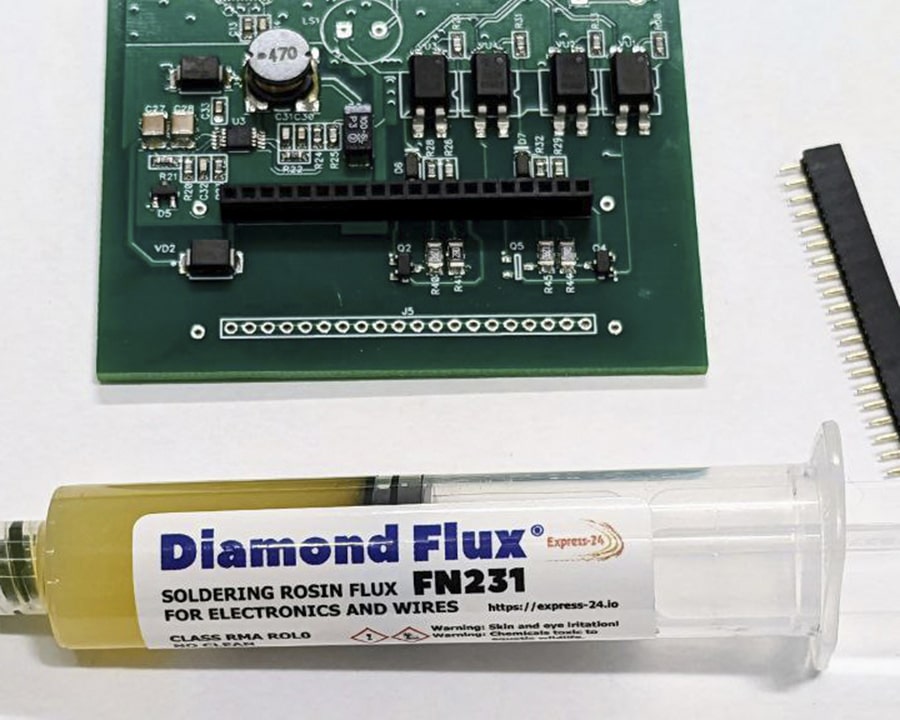Soldering is the backbone of electronics assembly, creating reliable connections that power everything from smartphones to industrial machinery. But even with the best solder and tools, one critical ingredient often determines success or failure: solder flux. If you've ever struggled with weak joints, poor conductivity, or stubborn oxidation, flux might be the missing piece in your process. So, what exactly is solder flux, and why does it matter so much in soldering? In this blog, we'll break it down for engineers and hobbyists alike, offering practical insights and technical details to elevate your soldering game.
Flux isn't just a helper - it's a game-changer. By cleaning metal surfaces, improving solder flow, and preventing oxidation, it ensures strong, durable joints that stand the test of time. Whether you're assembling a PCB for a prototype or repairing a circuit board, understanding flux can mean the difference between a flawless connection and a frustrating rework. Let's dive into the essentials of solder flux and explore why it's indispensable in soldering.

What Is Solder Flux?
Solder flux is a chemical agent used in soldering to prepare metal surfaces for a strong bond. At its core, flux removes oxides - those pesky layers that form when metals like copper or tin meet air - and cleans away impurities like dust or grease. This creates a pristine surface for molten solder to adhere to, forming a solid electrical and mechanical connection. Without flux, solder might bead up or fail to stick, leaving you with unreliable joints prone to cracking or poor conductivity.
Flux comes in various forms - liquid, paste, or even embedded in solder wire as a core. Its composition typically includes a base material (like rosin or organic acids) and activators that tackle oxidation. For example, rosin flux, derived from pine tree resin, is a classic choice for electronics due to its non-corrosive nature when solid. In contrast, water-soluble flux uses organic acids like citric or lactic acid for aggressive cleaning in high-volume PCB assembly. No matter the type, flux works by lowering surface tension, allowing solder to 'wet' the metal evenly, much like water spreads on a clean glass surface.

How Does Solder Flux Work in the Soldering Process?
The magic of solder flux happens during the soldering process, where it performs three key tasks: cleaning, wetting, and protecting. When you heat your soldering iron to, say, 350°C (a common temperature for lead-free solder), flux activates. It dissolves oxides on the metal surfaces - think of it as a chemical scrubber - leaving behind a clean slate. For instance, copper pads on a PCB oxidize quickly after etching, forming a thin layer that blocks solder adhesion. Flux eliminates this barrier in seconds.
Next, flux enhances wetting, which is how well solder spreads across a surface. Without it, solder might form blobs instead of smooth, conical joints. By reducing surface tension, flux lets molten solder flow at speeds up to 0.1-0.2 meters per second on a clean copper trace, ensuring full coverage. Finally, flux shields the metal from re-oxidation during soldering. At high temperatures, oxygen in the air reacts with metal faster, but flux creates a temporary barrier, keeping the surface pristine until the solder solidifies.
Why Solder Flux Matters: The Benefits Explained
So, why is flux non-negotiable in soldering? Its benefits directly impact joint quality, reliability, and efficiency. First, it ensures stronger solder joints. A clean, well-wetted joint can withstand mechanical stress - like vibrations in an automotive PCB - without cracking. Studies show that flux can reduce soldering defects by up to 20%, as seen in case studies from manufacturers switching to flux-based processes.
Second, flux boosts electrical reliability. Poorly formed joints increase resistance, which can disrupt signal integrity. For high-frequency circuits, where impedance is tightly controlled (e.g., 50 ohms for RF signals), a consistent joint is critical. Flux helps achieve this by preventing voids or incomplete bonds that raise resistance beyond acceptable levels, like 0.1 ohms per joint.
Finally, flux saves time and money. It speeds up soldering by improving flow, cutting down rework rates. In a production line, this efficiency can reduce cycle times by 10-15%, translating to significant cost savings. Whether you're a hobbyist tinkering with an Arduino or an engineer designing a multilayer PCB, flux makes your work faster and more reliable.
Types of Solder Flux: Which One Should You Use?
Rosin Flux
Rosin flux, made from pine resin, is the go-to for electronics soldering. It's mildly acidic when heated, effectively removing oxides, but becomes inert when cooled, leaving non-corrosive residue. Available in R (rosin), RMA (rosin mildly activated), and RA (rosin activated) grades, its activity level varies. RMA, with 0-2% halide content, balances cleaning power and safety for most PCB work.
Water-Soluble Flux
Water-soluble flux uses organic acids (e.g., citric or stearic) for aggressive cleaning, ideal for automated PCB assembly. It wets surfaces faster than rosin - up to 30% better in some tests - and cleans with just water, avoiding harsh solvents. However, its residue is conductive and corrosive, so thorough cleaning is a must within hours of soldering.
No-Clean Flux
No-clean flux leaves minimal, non-conductive residue, skipping the cleaning step in low-residue applications. It's perfect for hard-to-reach areas or quick prototyping. While convenient, its lower activity (often <0.5% halide) makes it less effective on heavily oxidized surfaces.
Inorganic Acid Flux
For tougher metals like stainless steel or brass, inorganic acid flux (e.g., zinc chloride-based) shines. It's too aggressive for electronics, though, as its corrosive residue can damage delicate components if not fully removed.
Choosing the right flux depends on your project. For a hobbyist soldering a simple LED circuit, rosin flux is reliable and safe. For high-volume PCB production with lead-free solder melting at 220-250°C, water-soluble flux handles the heat and scale.

When Can You Skip Flux?
Can you solder without flux? Sometimes, but it's risky. If you're working with pre-tinned components or solder paste (which contains flux), the built-in flux might suffice for small jobs, like attaching a surface-mount resistor. In these cases, the pre-applied flux handles light oxidation. Petroleum jelly is another DIY alternative, acting as an anti-corrosive barrier, though it's less effective at wetting.
However, skipping flux on untinned pads or oxidized surfaces often leads to disaster. Solder won't stick, joints will be brittle, and conductivity drops - think resistance jumping from 0.01 ohms to 0.5 ohms. For critical applications, like a medical device PCB, this isn't worth the gamble. Flux ensures consistency, so we recommend using it whenever possible.
Best Practices for Using Solder Flux
To get the most out of flux, follow these tips:
1. Clean First: Wipe surfaces with isopropyl alcohol to remove grease or dirt before applying flux. A clean start maximizes its effectiveness.
2. Apply Sparingly: Too little flux won't clean properly, while too much leaves excess residue or splatter. For a 1 cm² pad, a thin layer (about 0.1 mm thick) is enough.
3. Match the Temperature: Flux activates at specific ranges - e.g., rosin at 150-300°C. Overheating burns it off, reducing its benefits.
4. Clean Residue (When Needed): For water-soluble flux, rinse with deionized water within 2 hours. Rosin residue can stay unless cosmetics or conformal coating require removal with alcohol.
5. Store Properly: Keep flux sealed in a cool, dry place to prevent evaporation or contamination.

Common Soldering Challenges Solved by Flux
Flux tackles many soldering headaches. Oxidation is the biggest culprit - copper pads can form a 10-nanometer oxide layer in hours, blocking solder adhesion. Flux dissolves this instantly. Poor wetting, where solder balls up instead of spreading, is another issue; flux cuts surface tension by up to 50%, fixing this fast. It also prevents solder bridges - unwanted connections between pads - by guiding flow precisely, critical in dense PCB layouts with 0.5 mm pitch components.
How ALLPCB Supports Your Soldering Success
For engineers tackling complex PCB projects, the right tools and services make all the difference. At ALLPCB, we provide quick-turn prototyping and advanced manufacturing solutions to bring your designs to life. Our global logistics ensure fast delivery, while our precision assembly processes - like controlled flux application in SMT and wave soldering - guarantee high-quality joints. Whether you're testing a new design or scaling production, we're here to support your soldering needs with expertise and efficiency.
Conclusion: Flux Is Your Soldering Superpower
Solder flux isn't just a tool - it's the unsung hero of soldering. By cleaning surfaces, enhancing flow, and protecting joints, it ensures your connections are strong, reliable, and efficient. From rosin for hobbyists to water-soluble flux for mass production, choosing the right type can transform your results. Next time you fire up your soldering iron, don't skip the flux - it's the key to unlocking professional-grade outcomes, whether you're building a one-off prototype or a thousand PCBs.
 ALLPCB
ALLPCB







